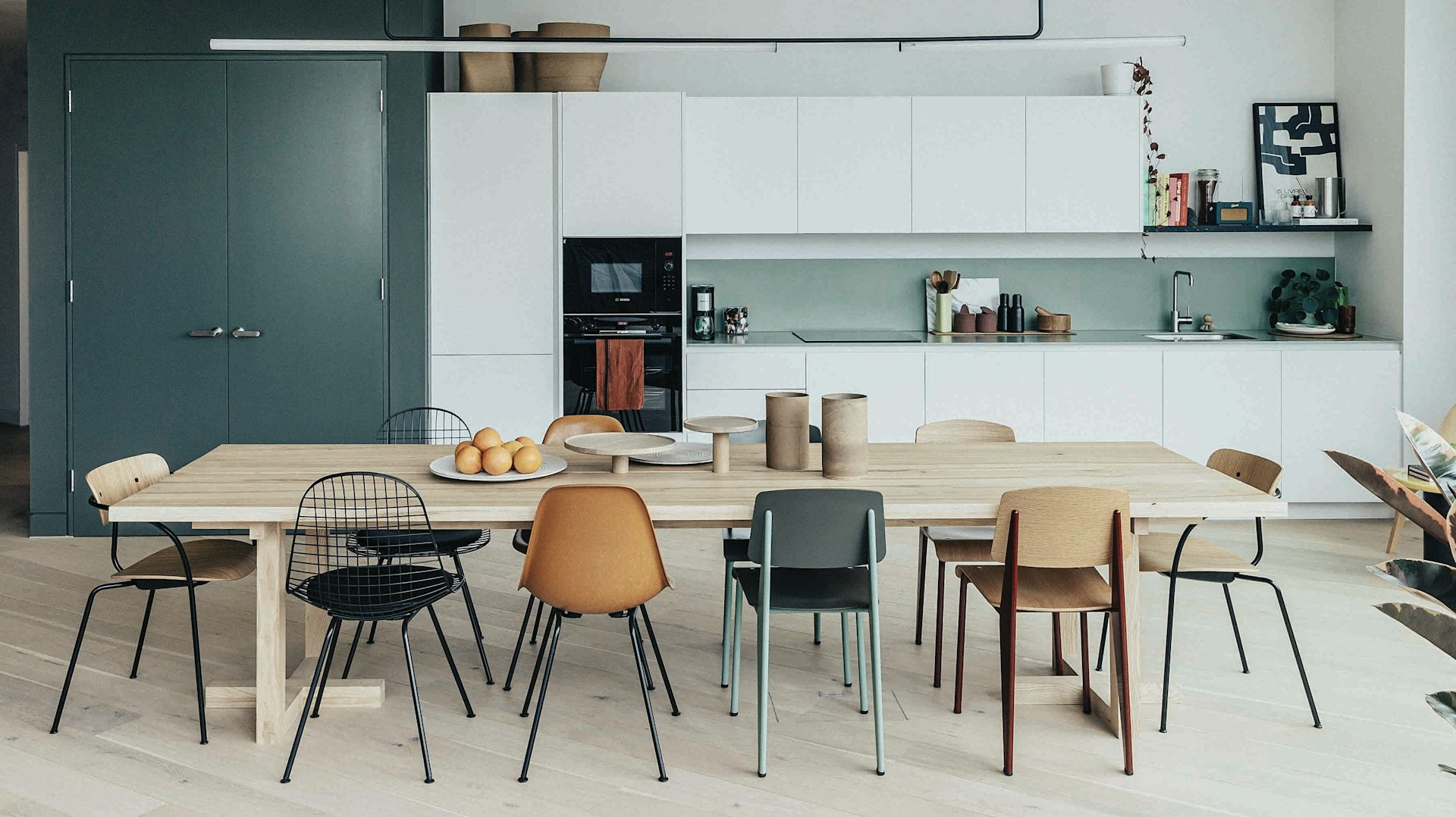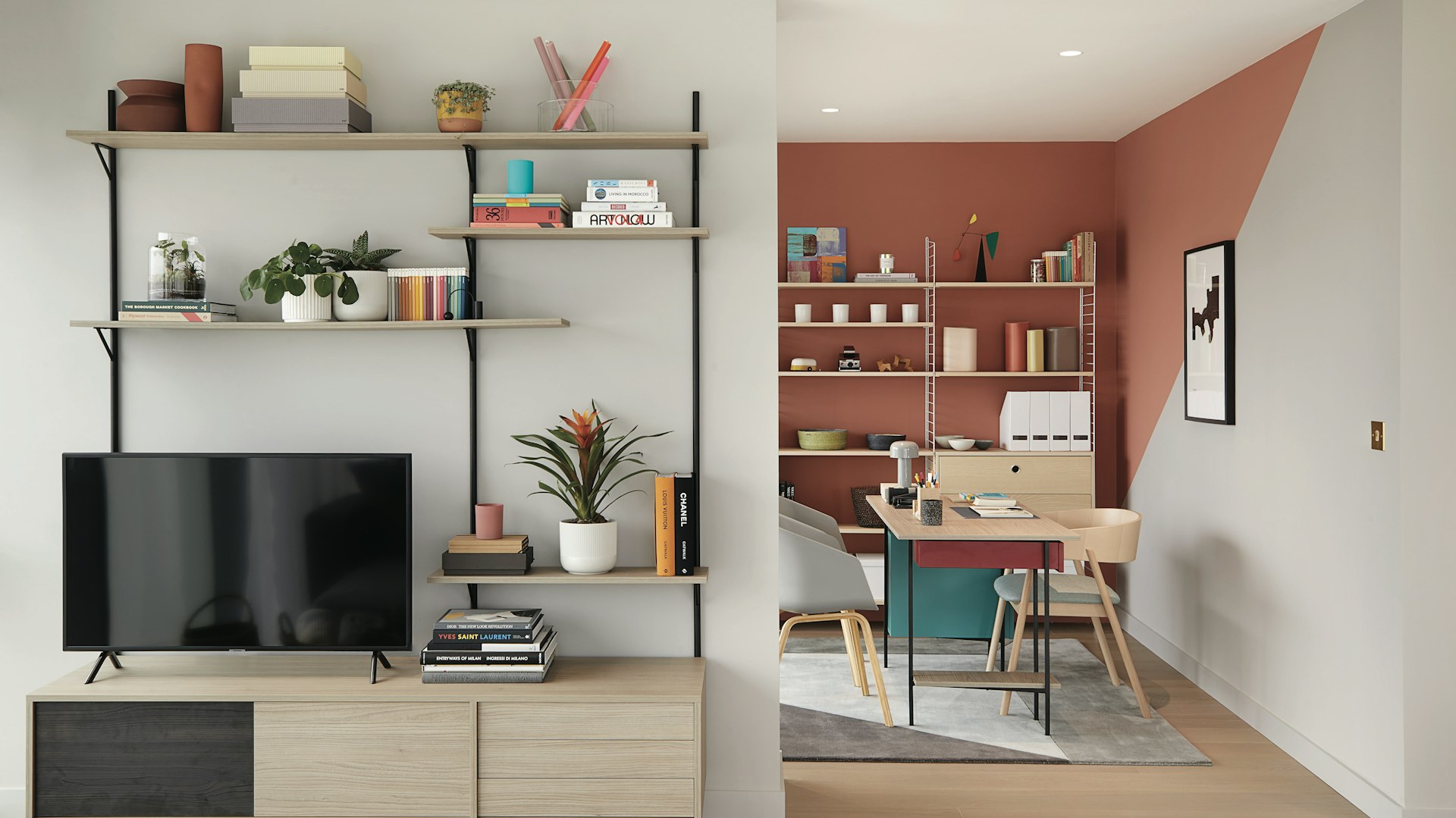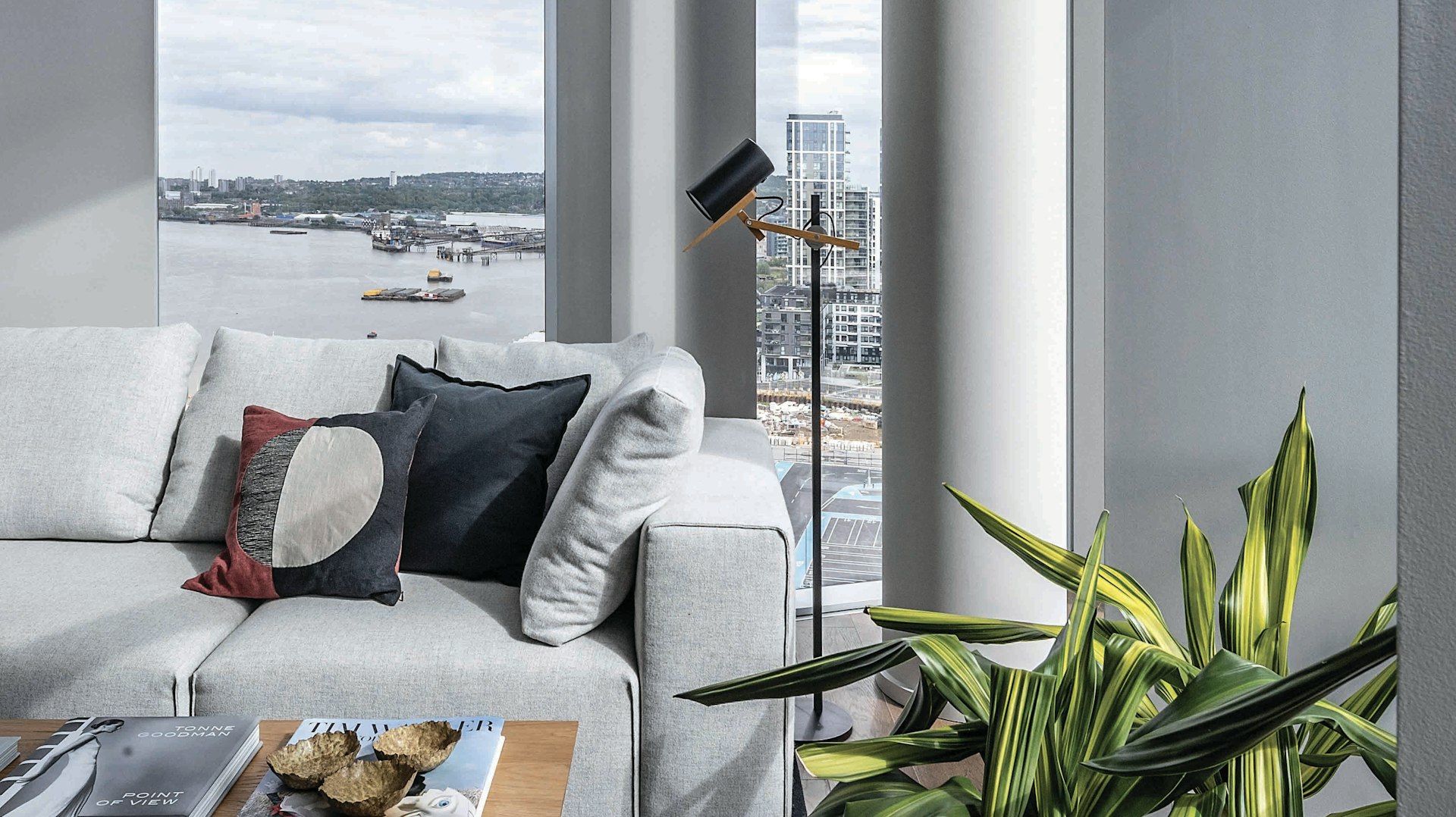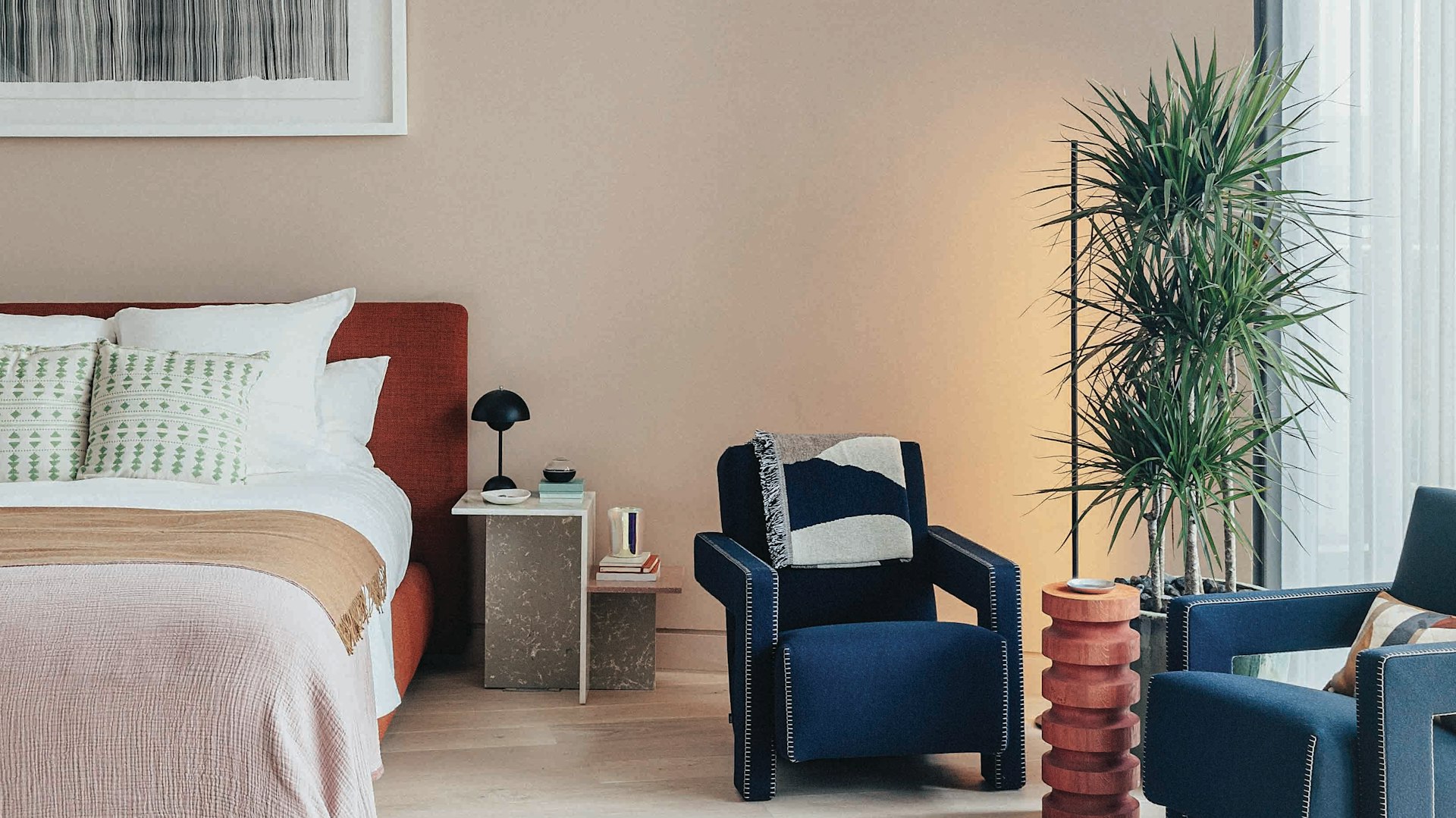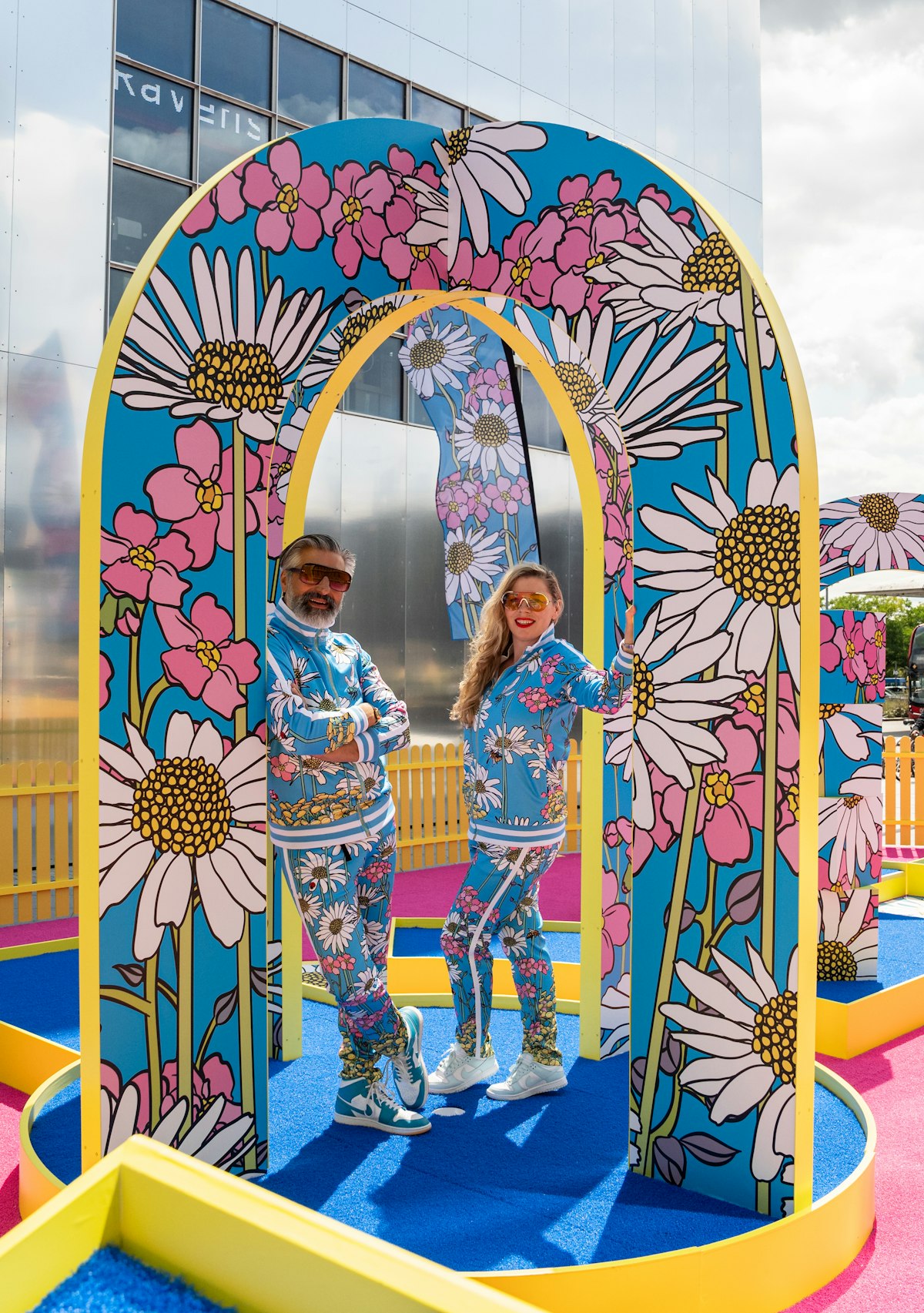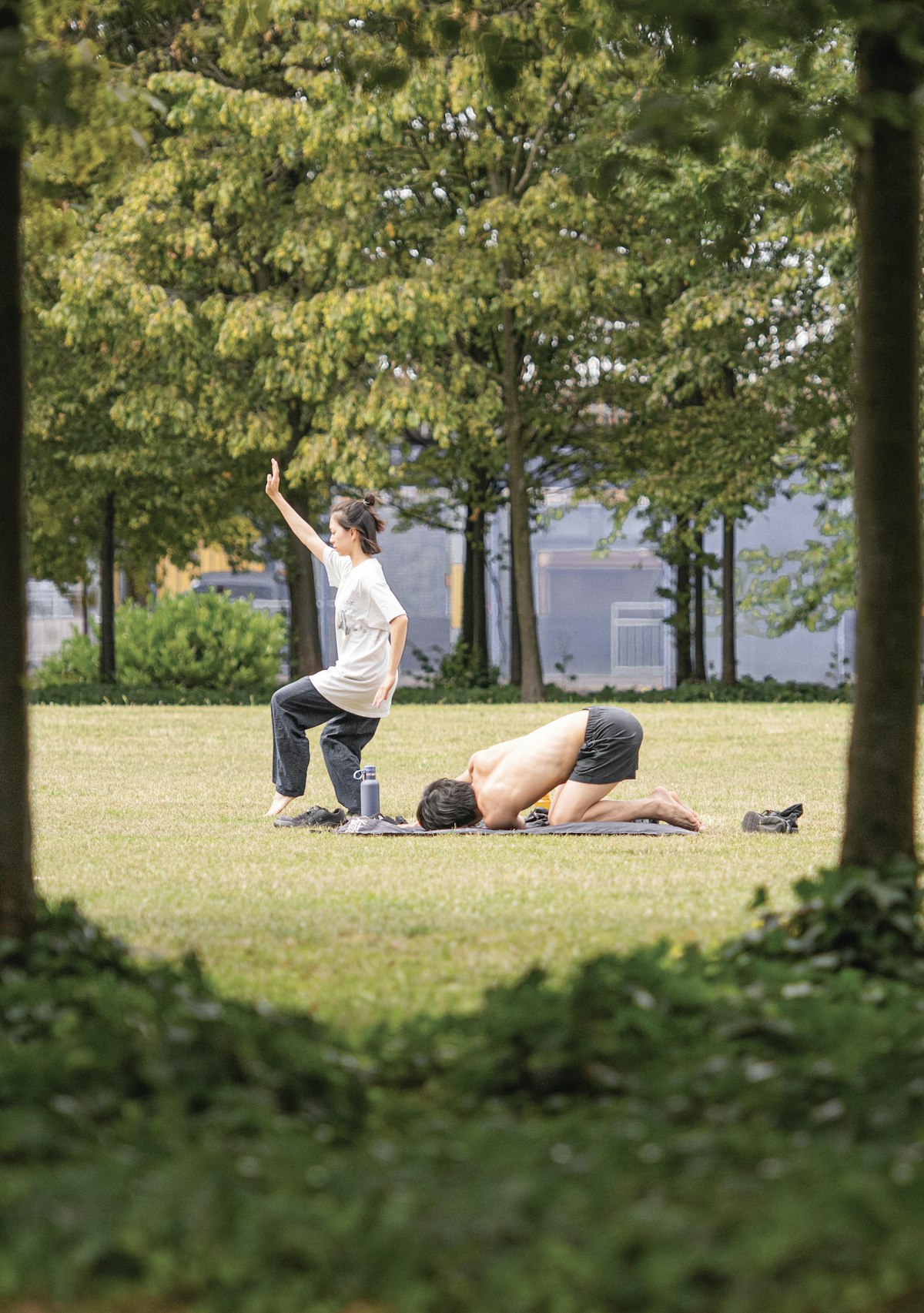
Space Makes the Place
Ruth Soria, from Greenwich Peninsula’s interior design team, shares her top tips for making the most of compact spaces.
Senior Interior Designer at Greenwich Peninsula, Ruth Soria, is responsible for transforming the development’s interiors, creating spaces that celebrate the constantly changing light, texture and colour of the surrounding environment. Which means she’s an expert in the art of creating unique spaces that cater to all manner of tastes. But if your budget doesn’t stretch to hiring your own personal interior designer to help plan your new home, Ruth’s guide to doing it yourself should set you on the right path.
When space is at a premium, you have to be selective with furnishings and fixtures. How do you approach decoration and accessorising?
Take your time – not everything needs to be bought when you move in. People often rush into making permanent decisions about furniture and decoration, but it’s important to have the necessary time to see how you use the space and what works best for you. I lived without a dining table for the first six months after moving into our apartment, and when I finally got one, I moved it three times before it felt like it was in the right position.
The same is true of art and accessories. Don’t rush, and only buy items that feel personal to you. You might discover items on your travels or receive gifts and slowly build up a collection that has a history and meaning for you. I like to mix cost-effective items with one-off artisan pieces for a curated but personal look.
Is the process very different when you’re designing for a larger home?
It’s broadly similar, but in larger homes there’s more emphasis on scale and proportion in relation to the overall space. There’s also more room to play with, of course, so considerations about storage and space optimisation aren’t as critical.
It’s still important to ensure that all elements have the right sizes and proportions, so everything feels in balance. In terms of decoration, in larger homes there is more space for statement pieces, but the challenge is how to achieve visual continuity, so the areas feel more unified, harmonious, and cohesive.
What should be the first considerations when designing for a smaller space in your home?
The first thing to consider is the purpose of the space and how it’s going to be used. To plan a space, you have to truly understand its function. To make the most of a smaller space, you need to maximise it by maintaining a balance between functionality and aesthetics.
I’d begin any project by mapping out the space; considering what pieces of furniture can be fitted, their scale and proportions to optimise the room, while maintaining enough distance between these pieces so the space can be used comfortably — it has got to work for the way you live day to day.
Depending on the purpose of the space, consider multifunctional furniture or bespoke units like drop-down beds or desks, sofa beds, ottomans that turn into beds and other space-saving features. In a small space, storage solutions are so important, whether that’s taking advantage of vertical space like floor-to-ceiling shelving and wall cabinetry, or using furniture pieces with hidden storage to help with capacity.
How do you balance the need to create a sense of space while maintaining warmth and cosiness?
Lighting and colour palettes need to be carefully considered. The intention with both is always to create depth, and lighting placement and colour temperature are crucial to making a space feel larger and inviting. A light and neutral colour palette helps to make a room feel larger and more open, and materials like mirror, glass and metal reflect light to help make a space feel larger.
But if it’s cosiness you want to emphasise, the approach to lighting and colour palette needs to be adapted. You can have a small space that feels both spacious and cosy. One approach is to use a warm, neutral colour palette with earthy tones and layered textures to bring in the cosiness. You can accessorise the space, layering plush cushions in different patterns and textures or adding sumptuous blankets and throws to comfortable pieces of furniture that have ergonomic design. These decorative items can add personality and character to your space.
While it might feel tempting to fill a space with objects, or fill the walls with art, in smaller spaces it’s best to keep decoration to a minimum to maintain a clean and uncluttered look. If you do want to showcase works of art, make sure that the scale and proportions are in line with the size of the room and curate art that has real meaning to you.
Do you have hard and fast rules when you approach a new space?
All spaces are different. Designing a living room or kitchen where entertainment needs consideration requires a different approach to designing a bedroom for instance, where relaxation is the key. But a few considerations apply to every space:
- Efficient layout to optimise functionality and use of the space. Try to ensure that you place furniture and objects in a way that allows you to move freely through the space unhindered.
- Adequate Storage. Stowing away clothing, homewares and other objects and utensils that cause clutter ensures a compact space never feels small.
- Durable and quality materials. It’s always tempting to prioritise budget, but if you want to do it once, do it well and invest in materials that will last.
- Different levels of lighting. Lighting has a huge impact on both the look and feel of a space. Creating general, ambient and accent light allows for a home with a variety of moods.
- Comfortable and ergonomic furniture pieces. Choose pieces that have been carefully designed to reduce discomfort and promote relaxation.
These are general guidelines, but if you approach a new project with these five themes in mind, you’re sure to create a space that feels just right for you.
Want to live at Greenwich Peninsula? Find out more about our properties available for sale or to rent at greenwichpeninsula.co.uk
